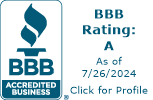It’s a common belief that to have a clean and healthy facility, every surface must be disinfected. But is all this disinfection necessary? Or instead, are we doing more harm than good?
Disinfectants are substances that kill life and are regulated by the U.S. Environmental Protection Agency (EPA). In order to be considered a disinfectant, a product must undergo extensive testing to show that it is safe to use and will meet its kill claims when used as directed by the manufacturer and product label. The EPA must approve a product and its label before it can be sold as a disinfectant. It is worth noting that these products fall under the category of bactericides – one of the four regulated forms of pesticides – and thus, may require the use of personal protection equipment per label instructions.
How Do You Disinfect? Disinfectants require you to clean first, apply the disinfectant and then keep the surface wet for a specified amount of time (also referred to as dwell time), typically as long as 5 to 10 minutes. This is because most disinfectants are unable to break through the top levels of dirt and soil to truly kill germs underneath, and thus, the surfaces require cleaning first. How many of us actually follow this process? Most of the time when we spray a disinfectant cleaner, we wipe it up right away and believe the surface has been disinfected. Unfortunately, it most likely has not been. The surface may have been sanitized, but it is doubtful the threshold of disinfection has been achieved.
Are There Other Options Available to Help With Bacteria Removal? A study at the University of California showed that high-quality microfiber cloths were able to remove 99 percent of soil and bacteria from a hard surface with just water, compared to a 33 percent removal rate for cotton cloths. Some of the microfiber manufacturers have had third party lab tests show up to a 99.99 percent removal rate with just water. These figures compare very well with disinfectants when they are used correctly. Another option is steam, with some manufacturers claiming disinfection in as little as 3 to 5 seconds for some machines.
When Is It Appropriate to Use Disinfectants? When properly used in the right places, disinfectants prevent infections, disease and save lives. They are certainly appropriate in hospitals and many health care settings. Disinfecting can be a good last step after cleaning up any bodily fluids. If there is an influenza, norovirus, or a similar outbreak, using a disinfectant on high-touch points, such as door knobs, phones and toilets and sink handles might make sense. When disinfecting, it is important to clean each surface with a fresh surface, meaning you must use a fresh disinfectant wipe or turn your cloth to a fresh surface before cleaning each new touch point. One study examining disinfectant wipes found wipes that were used on multiple door knobs began to add germs – not eliminate them – by the time it touched the third one.
Bottom Line: Follow the Label. When facilities misuse disinfectants, we not only fail to achieve disinfection, we may actually contribute to antibiotic resistance, as well. In the instances where it may be appropriate to use them, it’s important to follow label directions carefully. Only through proper use will these products remain a blessing to us and not a curse.
Credit: Cleaning & Maintenance Management by Bruce Vance

